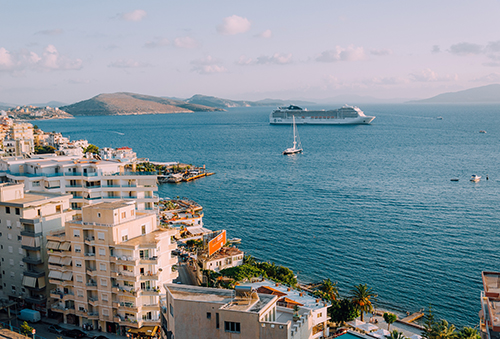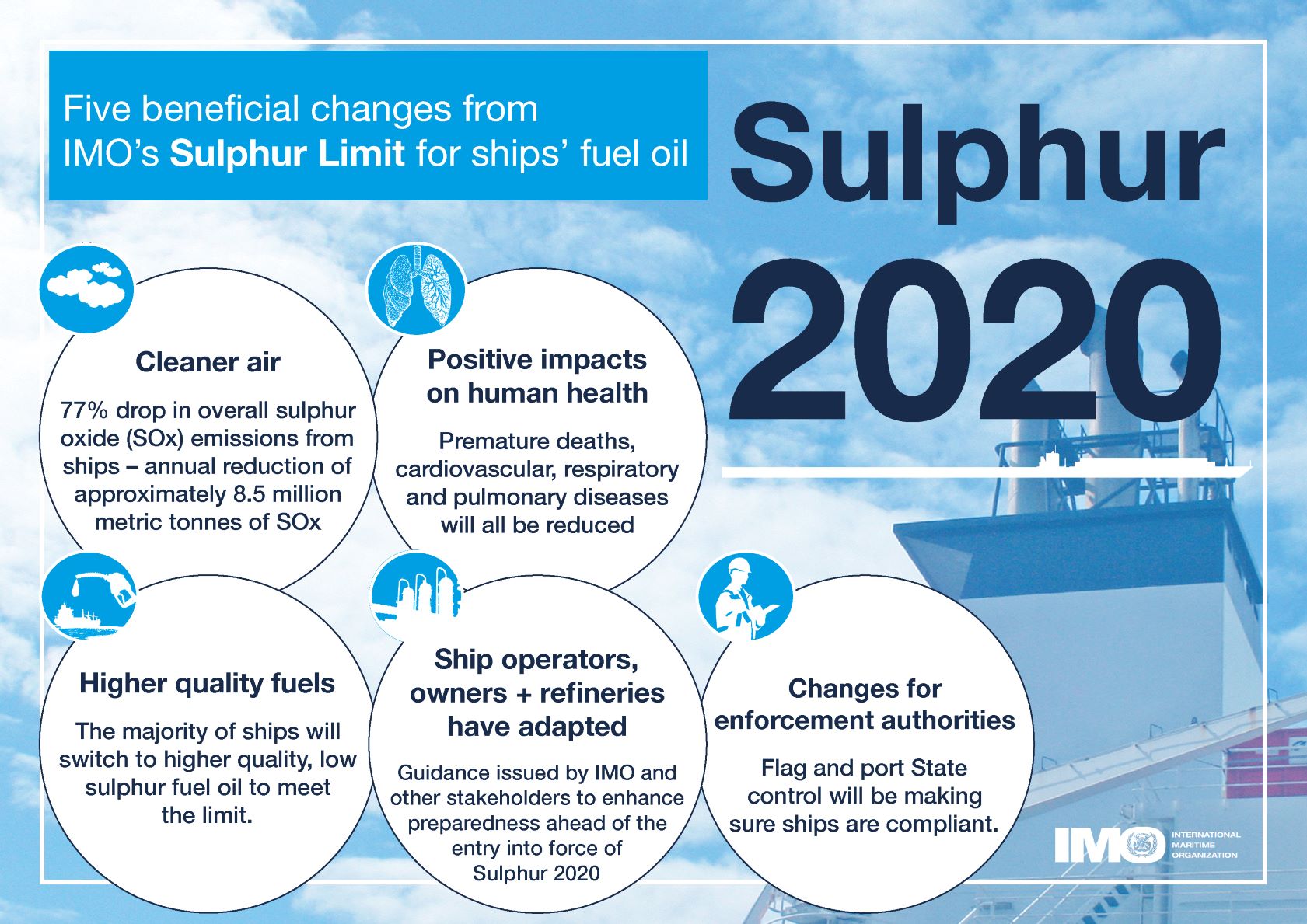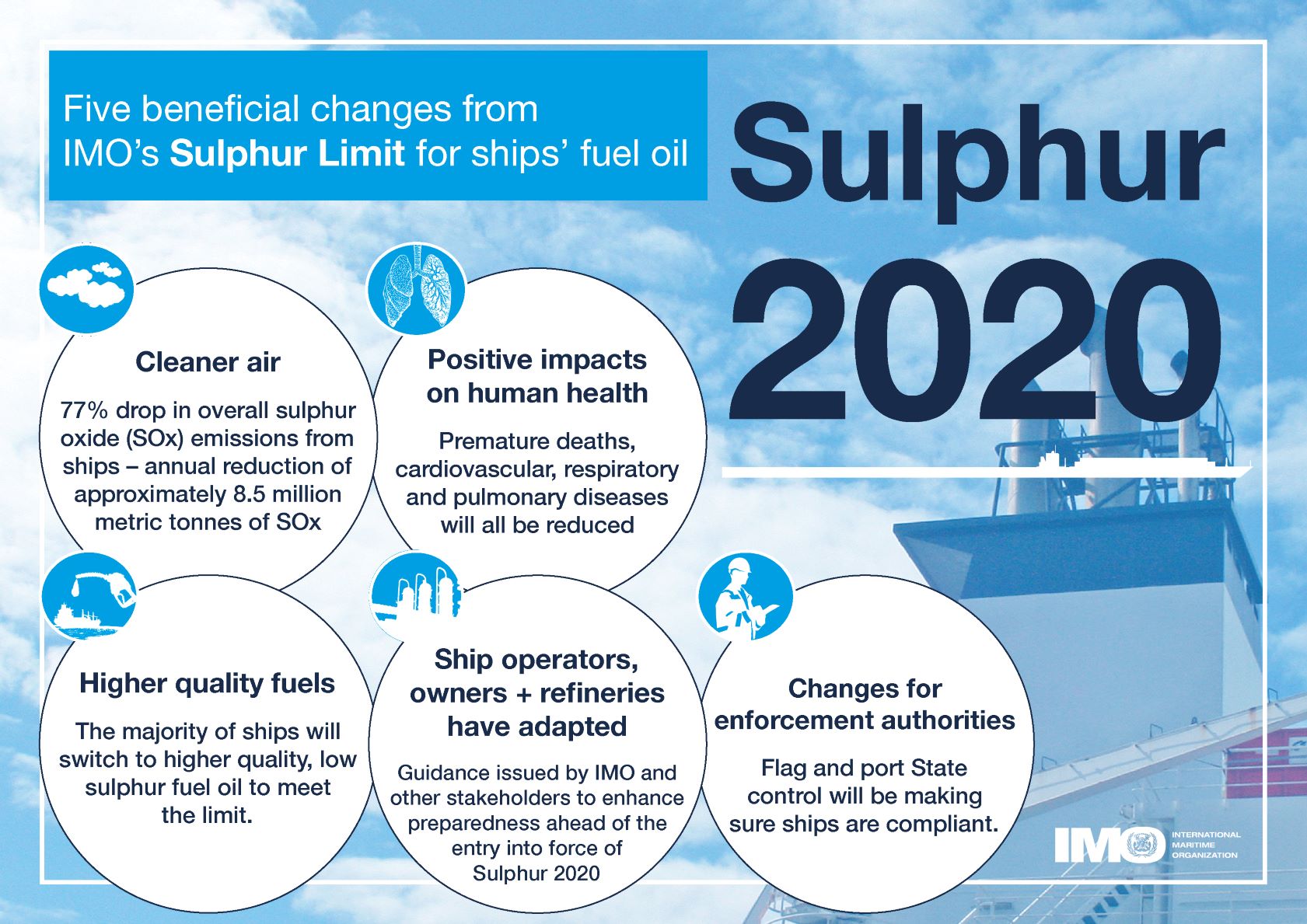Matches in Nanopublications for { <https://w3id.org/ro-id/075e9430-5949-4a09-8622-d20916994eaa/> ?p ?o ?g. }
Showing items 1 to 39 of
39
with 100 items per page.
- 075e9430-5949-4a09-8622-d20916994eaa type DataResearchObject assertion.
- 075e9430-5949-4a09-8622-d20916994eaa type ResearchObject assertion.
- 075e9430-5949-4a09-8622-d20916994eaa type LiveRO assertion.
- 075e9430-5949-4a09-8622-d20916994eaa type Dataset assertion.
- 075e9430-5949-4a09-8622-d20916994eaa mainEntity "Data Cube Product" assertion.
- 075e9430-5949-4a09-8622-d20916994eaa description "## Rationale From 1st January 2020 the global upper limit on the sulphur content of ships' fuel oil was reduced from 3.50% to 0.50%, which represents an ~86% cut (from [https://www.imo.org/en/MediaCentre/PressBriefings/pages/34-IMO-2020-sulphur-limit-.aspx](https://www.imo.org/en/MediaCentre/PressBriefings/pages/34-IMO-2020-sulphur-limit-.aspx)).  *Image from [IMO 2020 - cleaner shipping for cleaner air, 20 December 2019](https://www.imo.org/en/MediaCentre/PressBriefings/pages/34-IMO-2020-sulphur-limit-.aspx)* According to the [International Maritime Organization (IMO)](https://www.imo.org/) the new limit should lead to a 77% drop in overall SOx emissions from ships. The Figure below shows the 5 key beneficial changes from IMO's **Sulphur Limit** for Ships' fuel oil:  *Five beneficial changes from IMO’s Sulphur Limit for ships’ fuel oil* ## This Research Object's purpose In this work we look as the **actual impact of these measures on air pollution along shipping routes in Europe** based on Copernicus air quality data. [Copernicus Atmosphere Monitoring Service (CAMS)](https://ads.atmosphere.copernicus.eu/cdsapp#!/home) uses satellite data and other observations, together with computer models, to track the accumulation and movement of air pollutants around the planet (see [https://atmosphere.copernicus.eu/air-quality](https://atmosphere.copernicus.eu/air-quality)). ### Rohub - Adam plateform integration Some of this CAMS data is available from the [Adam platform](https://adamplatform.eu) and can be imported into a [Research Object](https://www.researchobject.org).  *Example of data (here daily temperatures) displayed on the Adam plateform* It is also possible, from the Research Object, to open the resource in the Adam platform, then interactively zoom into a particular geographical area (say to the right of the Strait of Gibraltar, along the track presumably followed by cargo ships to/from the Suez Canal) and change the date (for example between 2018-07-19 and 2023-07-19) to appreciate the change. #### To go further Obviously **a more detailed statistical analysis** would be required to minimize the effect of external factors (meteorological condition, level of cargo traffic, etc.) over a longer period of time to derive meaningful conclusions, however it does not seem that the high level of sulfur dioxide concentration from the pre-IMO regulation was reached after. ##### Looking at other pollutants Besides SOx the new regulation also contributed to decrease atmospheric concentrations in nitric oxides (NOx) as well as particulate matter (PM). ### References - [IMO 2020 - cleaner shipping for cleaner air, 20 December 2019](https://www.imo.org/en/MediaCentre/PressBriefings/pages/34-IMO-2020-sulphur-limit-.aspx)" assertion.
- 075e9430-5949-4a09-8622-d20916994eaa description "## Rationale From 1st January 2020 the global upper limit on the sulphur content of ships' fuel oil was reduced from 3.50% to 0.50%, which represents an ~86% cut (from [https://www.imo.org/en/MediaCentre/PressBriefings/pages/34-IMO-2020-sulphur-limit-.aspx](https://www.imo.org/en/MediaCentre/PressBriefings/pages/34-IMO-2020-sulphur-limit-.aspx)).  *Image from [IMO 2020 - cleaner shipping for cleaner air, 20 December 2019](https://www.imo.org/en/MediaCentre/PressBriefings/pages/34-IMO-2020-sulphur-limit-.aspx)* According to the [International Maritime Organization (IMO)](https://www.imo.org/) the new limit should lead to a 77% drop in overall SOx emissions from ships. The Figure below shows the 5 key beneficial changes from IMO's **Sulphur Limit** for Ships' fuel oil:  *Five beneficial changes from IMO’s Sulphur Limit for ships’ fuel oil* ## This Research Object's purpose In this work we look as the **actual impact of these measures on air pollution along shipping routes in Europe** based on Copernicus air quality data. [Copernicus Atmosphere Monitoring Service (CAMS)](https://ads.atmosphere.copernicus.eu/cdsapp#!/home) uses satellite data and other observations, together with computer models, to track the accumulation and movement of air pollutants around the planet (see [https://atmosphere.copernicus.eu/air-quality](https://atmosphere.copernicus.eu/air-quality)). ### Rohub - Adam plateform integration Some of this CAMS data is available from the [Adam platform](https://adamplatform.eu) and can be imported into a [Research Object](https://www.researchobject.org).  *Example of data (here daily temperatures) displayed on the Adam plateform* It is also possible, from the Research Object, to open the resource in the Adam platform, then interactively zoom into a particular geographical area (say to the right of the Strait of Gibraltar, along the track presumably followed by cargo ships to/from the Suez Canal) and change the date (for example between 2018-07-19 and 2023-07-19) to appreciate the change. #### To go further Obviously **a more detailed statistical analysis** would be required to minimize the effect of external factors (meteorological condition, level of cargo traffic, etc.) over a longer period of time to derive meaningful conclusions, however it does not seem that the high level of sulfur dioxide concentration from the pre-IMO regulation was reached after. ##### Looking at other pollutants Besides SOx the new regulation also contributed to decrease atmospheric concentrations in nitric oxides (NOx) as well as particulate matter (PM). ### References - [IMO 2020 - cleaner shipping for cleaner air, 20 December 2019](https://www.imo.org/en/MediaCentre/PressBriefings/pages/34-IMO-2020-sulphur-limit-.aspx)" assertion.
- 075e9430-5949-4a09-8622-d20916994eaa contentLocation 76d5071b-ad31-49a3-8667-6dfd57c5cb48 assertion.
- 075e9430-5949-4a09-8622-d20916994eaa contentSize "1304843" assertion.
- 075e9430-5949-4a09-8622-d20916994eaa contributor mailto:rpalma@man.poznan.pl assertion.
- 075e9430-5949-4a09-8622-d20916994eaa dateCreated "2023-09-11 08:38:38.270595+00:00" assertion.
- 075e9430-5949-4a09-8622-d20916994eaa hasGeometry "https://w3id.org/ro-id/075e9430-5949-4a09-8622-d20916994eaa/b7ea3b23-5650-42b3-bd1a-84f2fa8d7f5b" assertion.
- 075e9430-5949-4a09-8622-d20916994eaa creation_mode "MANUAL" assertion.
- 075e9430-5949-4a09-8622-d20916994eaa cite-as "Iaquinta, Jean, Anne Fouilloux, and Raul Palma. "Has the 2020 IMO fuel regulation had any noticeable impact on air pollution from shipping?." ROHub. Sep 11 ,2023. https://w3id.org/ro-id/075e9430-5949-4a09-8622-d20916994eaa." assertion.
- 075e9430-5949-4a09-8622-d20916994eaa template "https://w3id.org/ro/terms/earth-science#DataCentricResearchObjectTemplate" assertion.
- 075e9430-5949-4a09-8622-d20916994eaa funding 501100000780::101017501 assertion.
- 075e9430-5949-4a09-8622-d20916994eaa about 3949 assertion.
- 075e9430-5949-4a09-8622-d20916994eaa name "Has the 2020 IMO fuel regulation had any noticeable impact on air pollution from shipping?" assertion.
- 075e9430-5949-4a09-8622-d20916994eaa contentUrl "https://api.rohub.org/api/ros/075e9430-5949-4a09-8622-d20916994eaa/crate/download/" assertion.
- 075e9430-5949-4a09-8622-d20916994eaa creator 0000-0002-8763-1643 assertion.
- 075e9430-5949-4a09-8622-d20916994eaa dateModified "2025-03-05 00:52:20.209305+00:00" assertion.
- 075e9430-5949-4a09-8622-d20916994eaa datePublished "2023-09-11 08:38:38.270595+00:00" assertion.
- 075e9430-5949-4a09-8622-d20916994eaa encodingFormat "application/ld+json" assertion.
- 075e9430-5949-4a09-8622-d20916994eaa hasPart 016d61d3-b7cb-4330-9fa1-ed59c97d8b24 assertion.
- 075e9430-5949-4a09-8622-d20916994eaa hasPart 0af4cc1f-e3ec-4a08-8698-dbabcaa85c86 assertion.
- 075e9430-5949-4a09-8622-d20916994eaa hasPart 39c8c0cf-db39-4fc4-82d7-952a72233958 assertion.
- 075e9430-5949-4a09-8622-d20916994eaa hasPart 6f1862de-ef10-404a-92de-029c04c204be assertion.
- 075e9430-5949-4a09-8622-d20916994eaa hasPart de7d67ed-dd70-41c1-b725-a8f1de4412af assertion.
- 075e9430-5949-4a09-8622-d20916994eaa hasPart f5198e8a-882a-4755-ad2c-b41bf79eda37 assertion.
- 075e9430-5949-4a09-8622-d20916994eaa identifier "https://w3id.org/ro-id/075e9430-5949-4a09-8622-d20916994eaa" assertion.
- 075e9430-5949-4a09-8622-d20916994eaa license no-permission assertion.
- 075e9430-5949-4a09-8622-d20916994eaa publisher 01xtthb56 assertion.
- 075e9430-5949-4a09-8622-d20916994eaa publisher 00vn06n10 assertion.
- 075e9430-5949-4a09-8622-d20916994eaa keywords "Air pollution" assertion.
- 075e9430-5949-4a09-8622-d20916994eaa keywords "sulphur" assertion.
- 075e9430-5949-4a09-8622-d20916994eaa funder b021cb50-9d2c-4f65-958f-785aa7bc445e assertion.
- 075e9430-5949-4a09-8622-d20916994eaa community c019b3ba-6789-4d37-9e1a-66cf2c50662c assertion.
- 075e9430-5949-4a09-8622-d20916994eaa author 0000-0002-1784-2920 assertion.
- 075e9430-5949-4a09-8622-d20916994eaa author 0000-0002-8763-1643 assertion.
